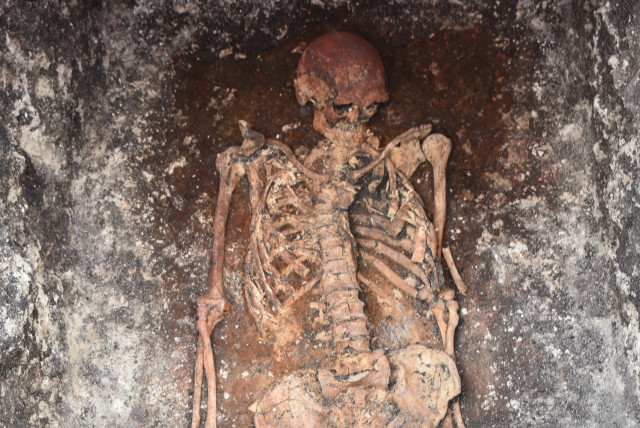‘Til death do us part: Humans, their dogs, other beloved animals were buried together

A study on human-animal co-burials in the Late Iron Age.
Dogs are well-known for their loving companionship with their owners – but after the humans’ death? Some people in an ancient community in what is now northern Italy were interred with animals and animal parts from species such as dogs, horses, and pigs.
The reasons remain mysterious, but they might represent an enduring companion relationship between these humans and animals or religious sacrificial practices, according to a study just published in the prestigious journal PLOS ONE by Zita Laffranchi from the University of Bern, Stefania Zingale from the Institute for Mummy Studies; the Eurac Research Bozen; Umberto Tecchiati from the University of Milan, and colleagues. It was entitled “Until death do us part: A multidisciplinary study on human-animal co- burials from the Late Iron Age necropolis of Seminario Vescovile in Verona, Italy.”
Of the 161 people buried at Seminario Vescovile, an archaeological site in Verona from 3rd to 1st century BCE, 16 were buried with some kind of animal remains. Some of the graves contained the remains of animals often eaten by people — including many pigs, a chicken, and part of a cow — which may have represented food offerings to the dead. But four of the people buried on the site were buried alongside the remains of dogs and/or horses, which are not commonly eaten.
One of those buried was a young adult male with his horse. Both the human and the horse were oriented east-west and facing east, with the horse laying with its legs crossed under its chest and the neck bent while the man was laid on top in a supine position. The sacrificing of horses and their burial, either in isolation or along with a deceased human, has also been discovered at other Venetic sites and interpreted as a ritual performed upon the death of high-status individuals, the authors wrote.
Grave good consistency
Although none of the graves contained weapons, the funerary items were quite variable (pottery, pins, coins, rings, and a few knives), with some plates and small globular vessels exhibiting inscriptions. The skeletons were oriented mostly in a north-south in a supine and extended position. Rarely was the skeleton prone or on its side.
To look for patterns that might explain these animal burials, the researchers analyzed the demographics, diets, genetics, and burial conditions of the interred humans and animals, but this did not lead to any notable correlations. In particular, the people interred with animals do not seem to be closely related to each other, which would have suggested that this was a practice of a certain family. The people buried with dogs or horses also varied; they included a baby buried with a complete dog skeleton, a young man buried with parts of a horse, a middle-aged man buried with a small dog, and a middle-aged woman buried with an entire horse, multiple other horse parts, and a dog skull.
The lack of patterns among these graves mean that multiple interpretations of these human-animal co-burials remain possible, the authors suggested. For example, dogs and horses often had religious symbolism in ancient cultures, but at the same time, specific individuals may also have been buried with their animal companions. In addition, the authors note, these human-animal burial practices might have been determined by the interplay among different individual traits and societal customs.
Jerusalem Post Store
`; document.getElementById("linkPremium").innerHTML = cont; var divWithLink = document.getElementById("premium-link"); if (divWithLink !== null && divWithLink !== 'undefined') { divWithLink.style.border = "solid 1px #cb0f3e"; divWithLink.style.textAlign = "center"; divWithLink.style.marginBottom = "15px"; divWithLink.style.marginTop = "15px"; divWithLink.style.width = "100%"; divWithLink.style.backgroundColor = "#122952"; divWithLink.style.color = "#ffffff"; divWithLink.style.lineHeight = "1.5"; } } (function (v, i) { });

